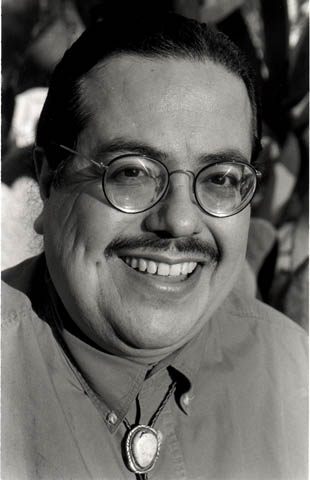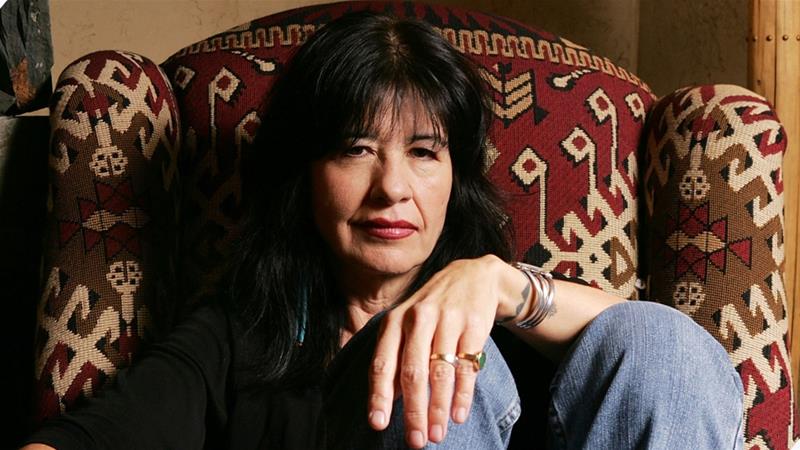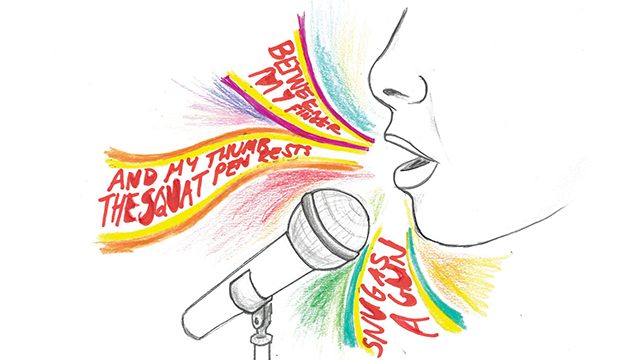Posted By Anushka Maheswary
A couple of weeks ago, I found myself sitting in a circle, that was largely constituted by people I was going to interact with for the first time, and rendering myself vulnerable in speaking about poetry and healing, poetry for healing, poetry as healing. In the course of the discussion that followed, one grappled with the idea of poetry as a medium of expression of resistance and healing, hope and protest simultaneously and what it means to be writing from the margins of the society. The following is a non-exhaustive list, compiled in the light of many discussions and conversations like the aforementioned one, of poets who’ve employed the idea of poetry as a site for the expression and assertion of their identities and in the process cultivating cultures of healing surrounding their work.
1. Francisco X Alarcón

Alarcón is one of the few Chicano poets to receive recognition for his poetry, largely written in Spanish, within the United States. His poems are a reflection and involve an intricate interweaving of his Chicano heritage and identity as a homosexual man. He is also credited with creating a new style of poetics, one that is in harmony with the various elements of nature and is therefore often also termed as, “eco-poetics”. The intersection of this appreciation of nature and his own sociopolitical identity as a homosexual Chicano man is reflected in the following section from his work entitled: To those who lost everything,
“…“you’re nothing
you’re shit
your home’s
nowhere”—
mountains
will speak
for you
rain
will flesh
your bones
green again
among ashes
after a long fire
started in
a fantasy island
some time ago
turning
Natives
into aliens“
2. Ai

She is particularly known for having mastered and made popular poetry written in the form of dramatic monologues that reflect an informed political choice which stems from her belief that first-person narratives are stronger, for this voice in her poems is that of struggling individuals, mostly women, isolated by poverty and remote existence that is then brought to the fore in the written word. Her unapologetically written work as a poet has been directly shaped by her conception of feminist politics and consciousness of her own identity as a woman of mixed-race heritage; the following bit from her poem Woman to man is characteristic of her unsparingly unique style,
“We don’t mix, even in bed,
where we keep ending up.
There’s no need to hide it:
you’re snow, I’m coal,
I’ve got the scars to prove it.
But open your mouth,
I’ll give you a taste of black
you won’t forget.
For a while, I’ll let it make you stronger,
make your heart lion,
then I’ll take it back.“
3. Joy Harjo

Earlier in the year, Joy Harjo became the first Native American to have won the United States poet laureate. Harjo has spoken about the limitations on careers for girls and the lack of identified poets in her neighbourhood to be inspiration from while she was growing up, and therefore ultimately beginning her interactions with the poetic medium through channelling the music that rang through the walls of her home. Her poetry mirrors a sense of justice, uniquely felt because of the histories that underlie her identity as an indigenous woman, that drives her to write and the need for cultivating cultures of healing. The following is a snippet from her poem, How to write a poem in a time of war,
“Someone has to make it out alive, sang a grandfather to his grandson,
His granddaughter, as he blew his most powerful song into the hearts of the children.
There it would be hidden from the soldiers,
Who would take them miles, rivers, mountains from the navel cord place
Of the origin story.”
4. Rita Dove

The yellow house on the corner, Rita’s first collection in the world of published poetry, brought her recognition for her distinctive style of composing poetry- brimming with a sense of history interwoven with individual detail. She has received continued praise for filling in historic moments like the civil rights era, with personal stories thus envisioning those moments by unravelling the myriad private thoughts that such moments always contain. Such an interweaving of social realities and dreams is found in her poem Teach us to number our days where she begins by painting a picture of a funeral parlour located in a contemporary ghetto and goes onto allude to lived experiences of police brutality by people of colour. The following is a portion from the aforementioned poem,
“he has swallowed a blue bean.
It takes root in his gut, sprouts
and twines upward, the vines curling
around the sockets and locking them shut.
And this sky, knotting like a dark tie?
The patroller, disinterested, holds all the beans.
August. The mums nod past, each a prickly heart on a sleeve.“
Also read: Watch: Remembering Kamala Das, The Mother Of Modern English Poetry
5. Iliana Rocha

The first collection of poems released by Iliana, entitled Karankawa, has been described by fellow poet Rigoberto González as “a book that honours the dead, the past, and the history of foundations- culture, family, memory- upon which the living build their futures and experience their bittersweet todays.” She herself has defined poetry as that which is always in motion, parallel to a procession- like a perpetual Día de los Muertos (Day of the Dead) parade, resisting the law of inertia; this emphasis on the element of movement in the poetic is also felt in the following fragment from her poem Self-portrait with headphones on,
“Always growing out my bangs, childhood,
that strange small.
The place written for me
invites me to hoarder and not mother,
so I’m living in this mirrored chest of drawers
called the body—my brother is hidden
in there, next to all of 1996. I have predictions
for my cancer—colon or breast—
a tattoo artist exacting areolas above the dark
canals of my heart.”
Also read: Rekhti: The Lost Genre Of Urdu Feminist Poetry
References
Featured Image Source: The College View
About the author(s)
anushka is a student of philosophy, who’s a little tired of speculative metaphysics and a lot in love with Audre Lorde’s writing and occasionally going for bike rides.




